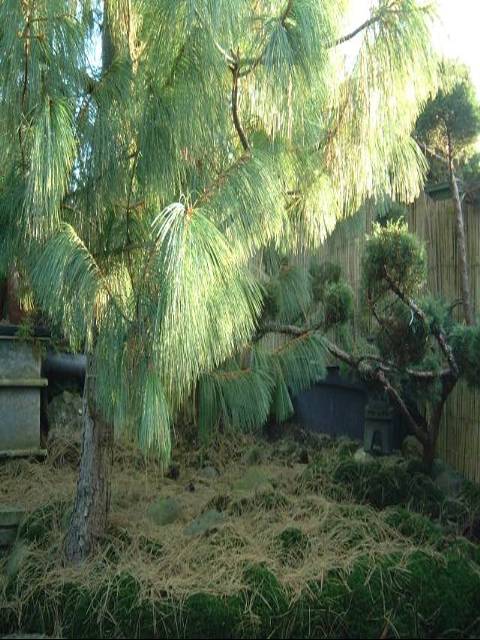| The Japanese garden represents a
different approach to nature compared to the typical western garden .Since
ancient times the Japanese garden has reflected the natural landscape
being spiritual in character represented by the Torii in the Shinto
religion and the dry stone gardens of the Zen Buddhists. Japanese gardens
have evolved over the past 1300 years, the first recorded garden was in
the year 612 ,five years after the first delegation was sent to mainland
China and headed by Ono-No-Imoko who was sent to learn as much as possible
as to what constituted a civilized society. Ono-No-Imoko would have seen
under construction the enormous landscaped park commissioned by the
emperor Sui Tang Ti near the then capital Lo Yang ,the circumference of
the park was seventy five miles and included extensive use of water and
architectural features ,flora which included forests of full grown trees
of every variety were collected from across the land and brought to the
park, also all manner of birds and fishes were collected by imperial edict
Ono-No-Imoko was probably the first Japanese to see landscaped
architecture in practice he also brought the art of ikebana back from
China at a later date . During the Nara period (646-794) members of the
Japanese nobility commissioned Chinese style lake gardens for the grounds
of their palaces and villas and though many where created none now exist,
however there are references to these gardens in Japanese ar t ,literature
and poetry ,The main characteristics were the use of hills, lakes or ponds,
islands, bridges and the planting of trees and shrubs, all aspects now
found in Japanese gardens. The gardens are strongly influenced by the
Shinto and Zen Buddhist religions, Shinto being the original religion and
Buddhism coming from China and Korea in the seventh century, the gardens
where designed to restore the inner calm, peace of mind and spirit, The
role of Shintoism being based on the veneration of nature, spirits and
ancestors and is apparent in the earliest mentioned gardens. |
